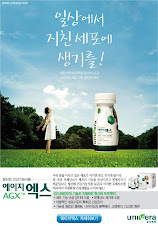
Its been a busy day, and I really haven't got as close to appropriating the omni health encompassing kombucha tea as I had planned. However, as stated in yesterday's post I did discover some essential details in terms of properly preparing and ingesting the 'tea' in order to benefit from its curative, if not thoroughly preventive properties.
Before delving into the recipe, lets briefly review a bit about the organism-based infusion. Kombucha can be traced back some 2000 years to regions in China, Russia, Japan and Korea. Word has it that -
the name 'kombucha' originated in Japan in 415 AD. Reportedly, a Korean physician called Kombu or Kambu treated the Emperor Inyko with the infusion. It became known by a combination of the name, 'Kombu' and the word, 'cha,' meaning tea. However, in modern Japan, kombucha tea is known as 'kocha kinoko' which translates as tea mushroom. Kombu means ' 'kelp' in Japanese and the name 'Kombucha' is used to refer to a hot drink made from powdered kelp. Now that we're thoroughly confused, I suppose I can begin with the recipe...
I found this particular recipe at:
The Happy Herbalist Website - http://www.happyherbalist.com/ Refer to the site for photos and special instructions on making the infusion.
1.Heat a good three quarts of water.
Boiling is not recommended as it tends to reduce the oxygen and carbon necessary for proper kombucha fermenting. Use water of known quality. Heating the water to dissolve the sugar and extract the tea
2. Add Tea. 5-7 tea bags or 2-3 tsp. loose tea usually 15 grams
3.Steep 15 minutes. NOTE: refer to the specific tea brewing recommendations inside
4. Add Sugar 1 cup Sugar (6-8 ounces / 200-300 grams)
5.Allow to cool to room temperature Keep
Covered and careful of contamination at this stage as the brew is a highly Sweet and Appetizing
Be Sure everything is at the same temperature
6. Pour cooled, room temperature liquid into fermenting container
7. Add Kombucha Mushroom (which is also at room temperature)'
8. Add 2 cups Previously Fermented Kombucha Brew as a Starter. (25%)
[use the liquid that came with the mushroom starter ] or use 1/4 cup white distilled vinegar. (to reduce the pH and protect the ferment from pathogens). Do not use un-pasteurized non-distilled apple cider
9. Cover with a clean cloth, paper towel or coffee filter Set aside in a quiet undisturbed spot. Every time the liquid is disturbed the mushroom will begin to start forming over again and not form properly. (K-Tea may still be good)
10. Ferment. 6 - 8 days normal brew cycle at 80F constant temperature, 8-14 days in the 70�s). 60F or below is not recommended. First time may take longer. Temperature Range: 68-83 degrees Fahrenheit. (20 - 26 degrees Centigrade) K-Tea should be sparkling semi-sweet cidery taste. The pH 2.7 to 3.2.
Save 1-2 cups (8-16 oz/240-500 ml) to begin another batch. Each batch should produce another mushroom (SCOBY). Save one mushroom and tea safely away in the event of some disaster. Use either mushroom to start another batch.
Well, if nothing else, its worth a try. Also soon as I find out who sells it, I'll let you know.
Best to all






 Use of the raw gel has been reported to be effective in treating blisters, insect bites, rashes, sores, herpes, urticaria, athlete's foot, fungus, vaginal infections, conjunctivitis, sties, allergic reactions, and dry skin.
Use of the raw gel has been reported to be effective in treating blisters, insect bites, rashes, sores, herpes, urticaria, athlete's foot, fungus, vaginal infections, conjunctivitis, sties, allergic reactions, and dry skin.







